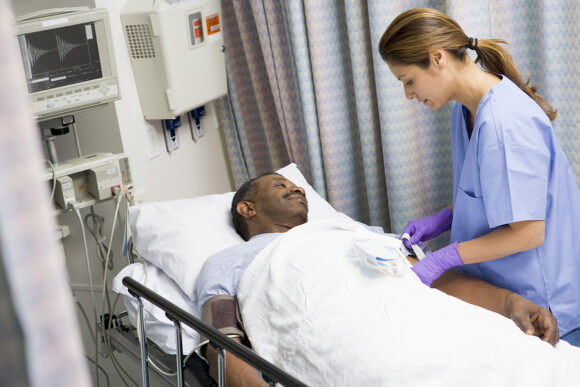After a substantial dip in 2009, insurance claims in the nursing profession are costing more.
The average total paid per claim is generally over $200,000 but this had dropped to around $150,000 two years ago. Now the number has jumped back up to nearly the 2008 level when they were at their highest, according to a new study by CNA.
The study covers 2006 through 2010 and shows that, as expected, certain segments of the nursing population including obstetrics and neurosurgery have the highest severity.
The CNA study points out some of the areas that have troubled nurses over the past five years and identifies possible problem areas in the future.
“This report was developed as a tool to help nurses examine their current practices in relation to the claims and losses experienced by their peers,” said Bruce Dmytrow, vice president – Specialty Risk Control, CNA.
CNA is the nation’s largest underwriter of professional liability insurance coverage for individual nurses through the Nurses Service Organization (NSO) program. This entails more than 600,000 policies for nurses who work in hospitals, nursing homes, practitioner offices, schools, medical spas and ambulatory care centers.
One of the new areas that CNA believes could see claims rise in the future includes nurses that work in the aesthetics field. Some of the claims that have been popping up with these specialists have included burns and scarring from laser hair removal and laser tattoo removal, as well as scarring or infection from Botox or other tissue fillers.
This area is one of the newest products offered by the NSO and the HPSO. Earlier this year the organizations started offering a cosmetic procedure endorsement for firms that offer non-surgical aesthetic work.
The product protects against medical malpractice allegations for almost 100 procedures, ranging from dermal fillers to laser skin resurfacing to microdermabrasion to Botox and collagen injections.
These kinds of risks also show up at medi -spas, which are often staffed by nurses. Susan Preston, president of Professional Program Insurance Brokerage, which has a medi-spa program, said that while the laser industry is now fairly established, claims are commonplace.
“Anybody at all who has done medi-spas for any length of time will know that there are literally tons of claims on laser business,” Preston said.
Most of these types of claims come down to scarring and damage from the lasers resulting in lightening or darkening of the skin and burning. The claims can vary in severity and often take a while to determine. However, Preston said that a true burn can end up costing as much as $100,000.
The CNA study found 3.7 percent of claims were related to aesthetics with an average paid indemnity of $43,257.
Overall, the report confirms what most people would expect. Severity for nurses is most often tied to the specialty. The highest percentages of closed claims were in adult medical/surgical, gerontology and obstetrics. More than 40 percent of closed claims came from adult medical/surgical specialists. While this may seem on the face to say these are some of the riskiest to insure, CNA notes that most of the nurses in the NSO program work in those specialties, so that makes sense.
The highest average paid indemnities were in the obstetrics, neurology/neurosurgery and plastic/reconstructive surgery specialties.
The study found that licensed practical nurses (LPNs) and licensed vocational nurses (LVNs) face less severe claims than registered nurses (RNs). They also face fewer claims. Closed claims against RNs made up 91.9 percent of the claims. The average paid indemnity for RNs was $168,438 as opposed to just $83,213 for LPNs/LVNs. Expenses for both were just about $43,000.
Just over 56 percent of claims fall in a paid indemnity range of $10,000 to $99,999. Almost 25 percent fall between $100,000 and $249,999. That number dips to as low as 2.1 percent for both $500,000 to $749,999 and $750,000 to $999,999. However the number jumps slightly to 3.5 percent for anything over a $1 million as lawyers are more likely to pursue the biggest cases.
The report also includes risk control recommendations and a self-assessment checklist for nurses, as well as highlights from the NSO’s 2001 Qualitative Nurse Work Profile Survey.
Was this article valuable?
Here are more articles you may enjoy.


 US Regulator Takes Initial Steps to Boost Self-Driving Cars
US Regulator Takes Initial Steps to Boost Self-Driving Cars  Group Sues California Department of Insurance Over FAIR Plan Surcharges
Group Sues California Department of Insurance Over FAIR Plan Surcharges  La Niña’s End Threatens to Unleash an Active Atlantic Hurricane Season
La Niña’s End Threatens to Unleash an Active Atlantic Hurricane Season  Lawsuits Against BP Over Health Impacts of Deepwater Horizon Cleanup Stalled in Court
Lawsuits Against BP Over Health Impacts of Deepwater Horizon Cleanup Stalled in Court 